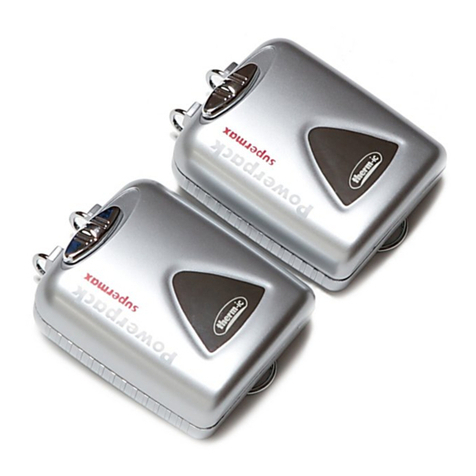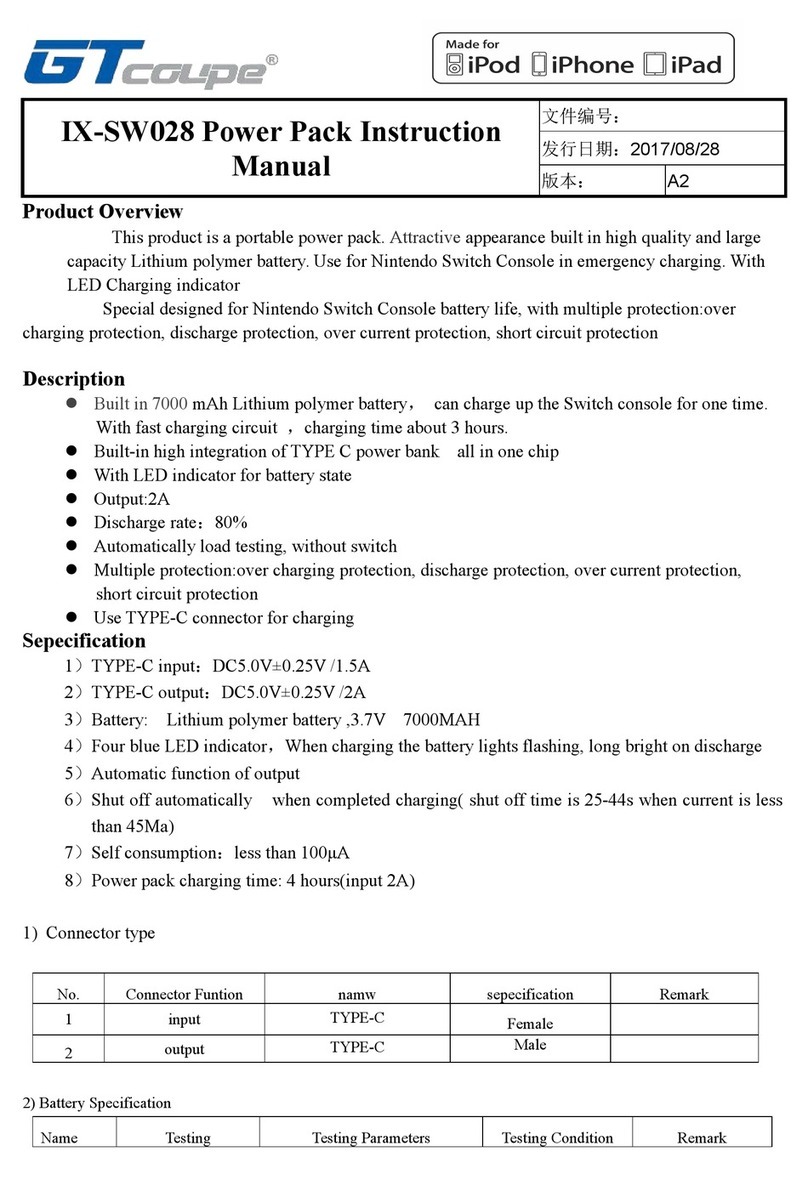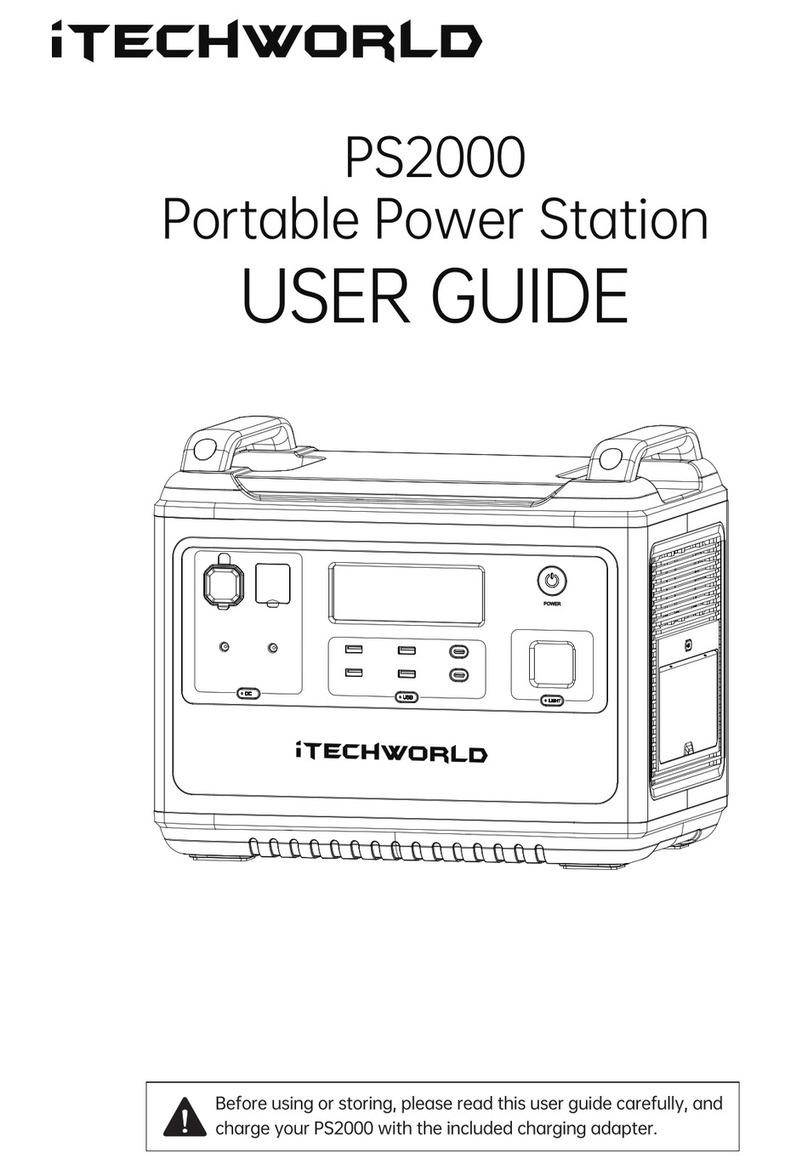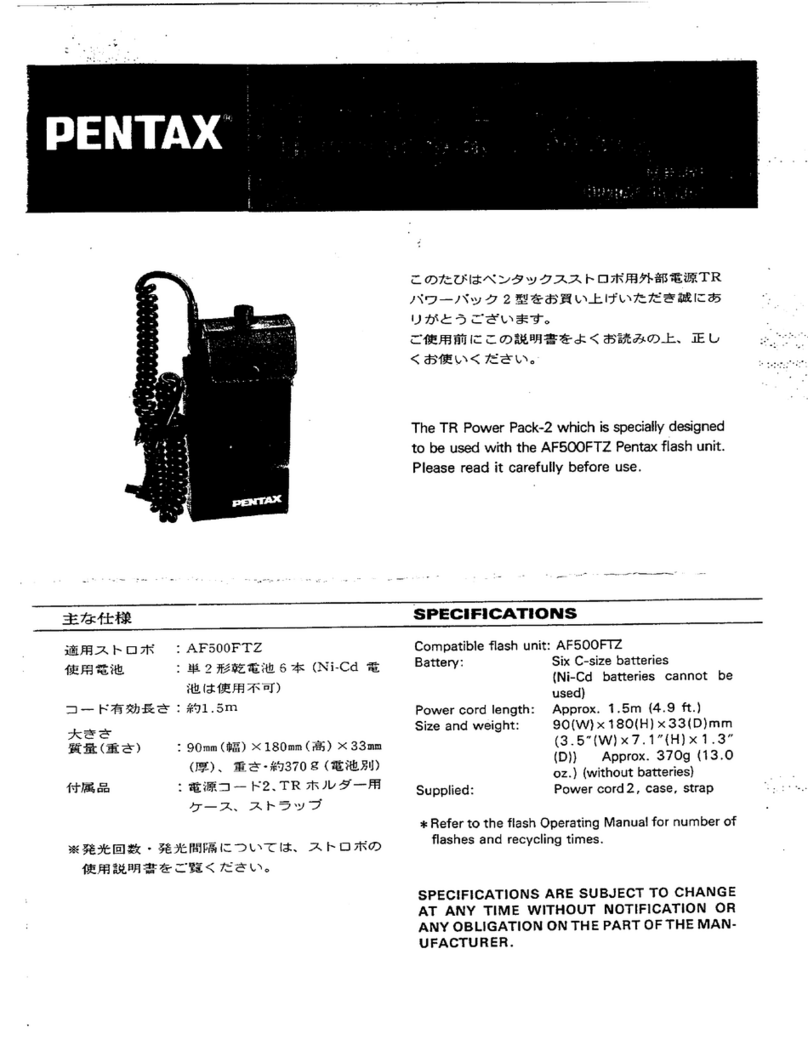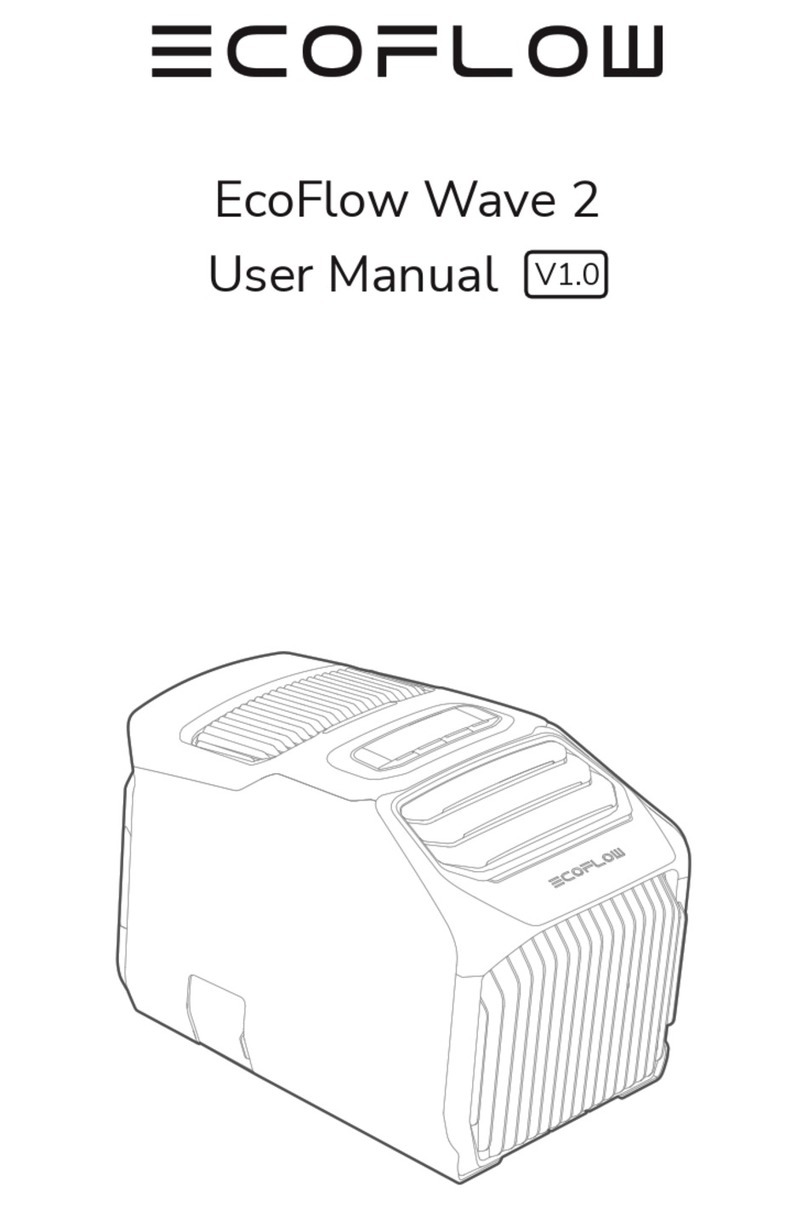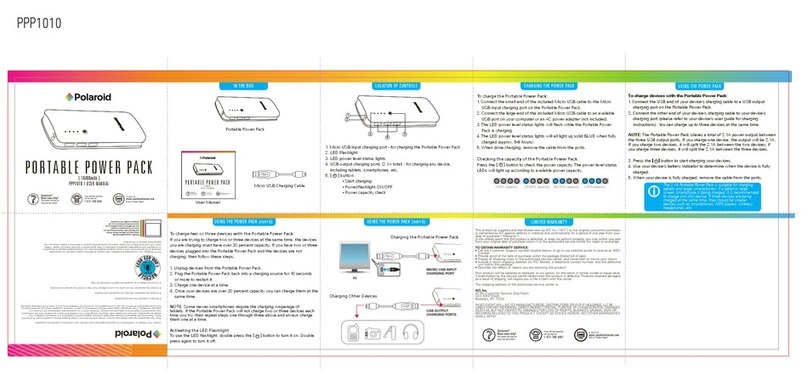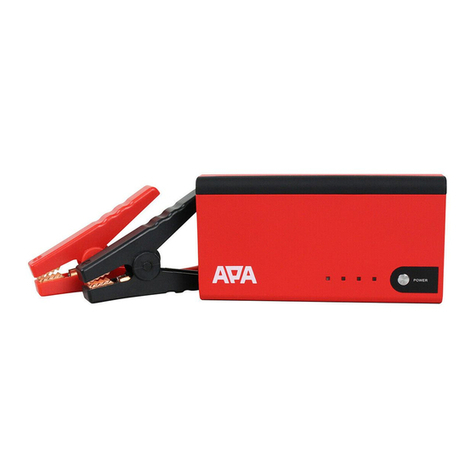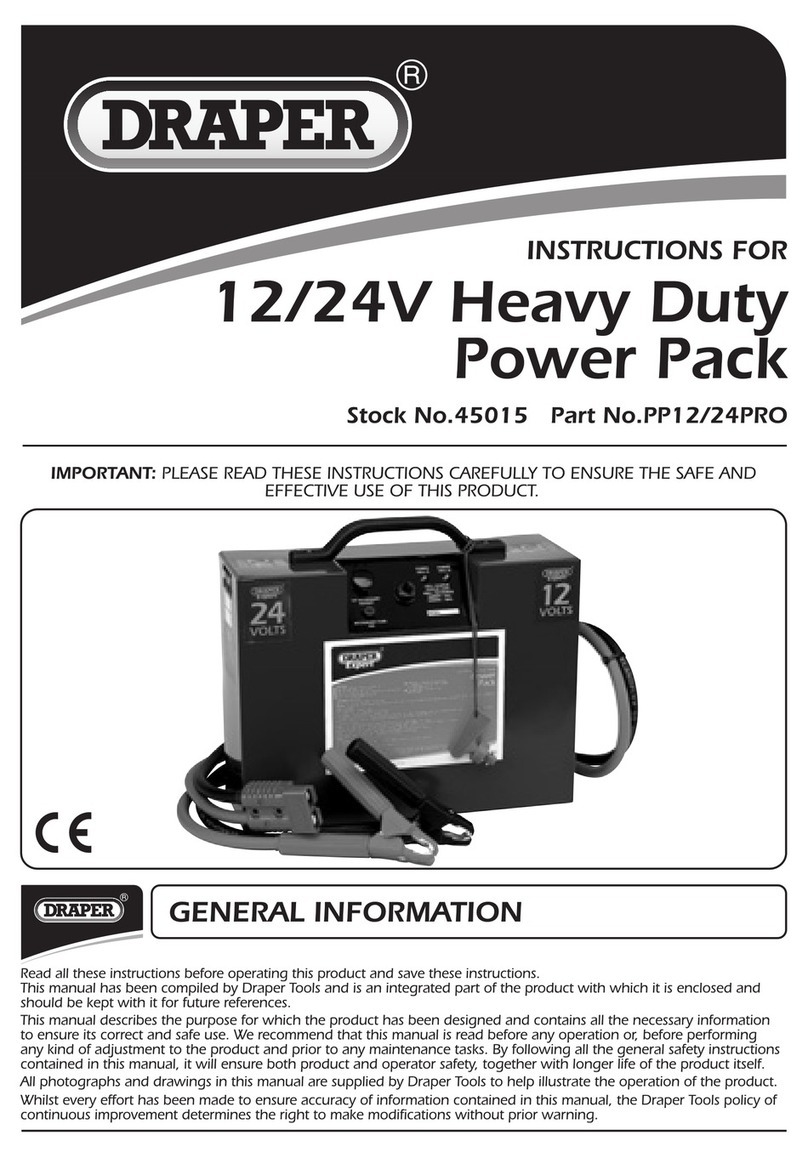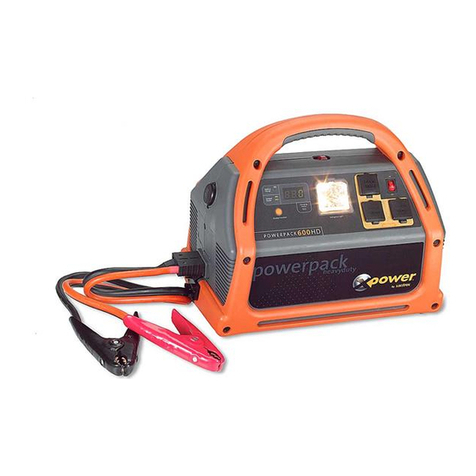
© 2007 ICS, Blount Inc. F/N 521599 Oct 07
P95 OPERATOR’S MANUAL
8
REQUIREMENTS
HYDRAULIC HOSE REQUIREMENTS
HydraulichosetypesauthorizedforusewiththeP95areasfollows:
• Certifiednon-conductive
• Wire-braided(conductive)
• Fabric-braided(notcertifiedorlabelednon-conductive)
Hoselistedaboveistheonlyhoseauthorizedforusenearelectricalconductors.
Hoseandlistedaboveareconductiveandmustneverbeusednearelectricalconductors.
HOSE SAFETY TAGS
To help ensure your safety, the following DANGER tags are attached to all hoses purchased from ICS.
DONOTREMOVETHESETAGS
If the information on the tag is illegible because of wear or damage, replace the tag immediately. A new tag maybe
obtained from your ICS Distributor.
THE TAG SHOWN BELOW IS ATTACHED TO "CERTIFIED NON-CONDUCTIVE" HOSE
THE TAG SHOWN BELOW IS ATTACHED TO "CONDUCTIVE" HOSE
DO NOT REMOVE THIS TAG
DANGER
SIDE 2
3. DO NOT EXCEED HOSE WORKING PRESSURE OR ABUSE HOSE. IMPROPER
USE OR HANDLING OF HOSE COULD RESULT OR OTHER HOSE FAILURE. KEEP
HOSE AS FAR AWAY AS POSSIBLE FROM BODY AND DO NOT PERMIT DIRECT
CONTACT DURING HOSE. CONTACT AT THE BURST CAN CAUSE BODILY
INJECTION AND SEVERE PERSONAL INJURY.
4. HANDLE AND ROUTE HOSE CAREFULLY TO AVOID KINKING, ABRASION,
CUTTING OR CONTACT WITH HIGH TEMPERATURE SURFACES. DO NOT USE IF
KINKED. DO NOT USE HOSE TO PULL OR LIFT TOOLS, POWER UNITS, ETC.
5. CHECK ENTIRE HOSE FOR CUTS CRACKS LEAKS ABRASIONS, BULGES, OR
DAMAGE TO COUPLINGS IF ANY OF THESE CONDITIONS EXIST, REPLACE THE
HOSE IMMEDIATELY. NEVER USE TAPE OR ANY DEVICE TO ATTEMPT TO MEND
THE HOSE.
6. AFTER EACH USE, STORE IN A CLEAN DRY AREA.
DANGER
SIDE 1
DO NOT REMOVE THIS TAG
1. FAILURE TO USE HYDRAULIC HOSE LABELED AND CERTIFIED AS
NON-CONDUCTIVE WHEN USING HYDRAULIC TOOLS ON OR NEAR ELECTRIC
LINES MAY RESULT IN DEATH OR SERIOUS INJURY.
2. FOR PROPER AND SAFE OPERATION, MAKE SURE THAT YOU HAVE BEEN
PROPERLY TRAINED IN CORRECT PROCEDURES REQUIRED FOR WORK IN OR
AROUND ELECTRICAL LINES.
3. BEFORE USING HYDRAULIC HOSE LABELED AND CERTIFIED AS
NON-CONDUCTIVE ON OR NEAR ELECTRICAL LINES, WIPE THE ENTIRE LENGTH
OF THE HOSE AND FITTING WITH A CLEAN DRYABSORBENT CLOTH TO REMOVE
DIRT AND MOISTURE AND TEST HOSE FOR MAXIMUM ALLOWABLE CURRENT
LEAKAGE IN ACCORDANCE WITH SAFETY DEPARTMENT INSTRUCTIONS.
DO NOT REMOVE THIS TAG
DANGER
SIDE 2
4. HANDLE AND ROUTE HOSE CAREFULLY TO AVOID KINKING, ABRASION,
CUTTING OR CONTACT WITH HIGH TEMPERATURE SURFACES. DO NOT USE IF
KINKED. DO NOT USE HOSE TO PULL OR LIFT TOOLS, POWER UNITS, ETC.
5. CHECK ENTIRE HOSE FOR CUTS CRACKS LEAKS ABRASIONS, BULGES, OR
DAMAGE TO COUPLINGS IF ANY OF THESE CONDITIONS EXIST, REPLACE THE
HOSE IMMEDIATELY. NEVER USE TAPE OR ANY DEVICE TO ATTEMPT TO MEND
THE HOSE.
6. AFTER EACH USE, STORE IN A CLEAN DRY AREA.
DANGER
SIDE 1
DO NOT REMOVE THIS TAG
1. THIS HOSE NOT LABELED OR CERTIFIED AS NON-CONDUCTIVE WHEN USING
HYDRAULIC TOOLS ON OR NEAR ELECTRIC LINES MAY RESULT IN DEATH OR
SERIOUS INJURY.
2. FOR PROPER AND SAFE OPERATION, MAKE SURE THAT YOU HAVE BEEN
PROPERLY TRAINED IN CORRECT PROCEDURES REQUIRED FOR WORK IN OR
AROUND ELECTRICAL LINES.
3. DO NOT EXCEED HOSE WORKING PRESSURE OR ABUSE HOSE. IMPROPER
USE OR HANDLING OF HOSE COULD RESULT OR OTHER HOSE FAILURE. KEEP
HOSE AS FAR AWAY AS POSSIBLE FROM BODY AND DO NOT PERMIT DIRECT
CONTACT DURING HOSE. CONTACT AT THE BURST CAN CAUSE BODILY
INJECTION AND SEVERE PERSONAL INJURY.
DO NOT REMOVE THIS TAG
DANGER
SIDE 2
3. DO NOT EXCEED HOSE WORKING PRESSURE OR ABUSE HOSE. IMPROPER
USE OR HANDLING OF HOSE COULD RESULT OR OTHER HOSE FAILURE. KEEP
HOSE AS FAR AWAY AS POSSIBLE FROM BODY AND DO NOT PERMIT DIRECT
CONTACT DURING HOSE. CONTACT AT THE BURST CAN CAUSE BODILY
INJECTION AND SEVERE PERSONAL INJURY.
4. HANDLE AND ROUTE HOSE CAREFULLY TO AVOID KINKING, ABRASION,
CUTTING OR CONTACT WITH HIGH TEMPERATURE SURFACES. DO NOT USE IF
KINKED. DO NOT USE HOSE TO PULL OR LIFT TOOLS, POWER UNITS, ETC.
5. CHECK ENTIRE HOSE FOR CUTS CRACKS LEAKS ABRASIONS, BULGES, OR
DAMAGE TO COUPLINGS IF ANY OF THESE CONDITIONS EXIST, REPLACE THE
HOSE IMMEDIATELY. NEVER USE TAPE OR ANY DEVICE TO ATTEMPT TO MEND
THE HOSE.
6. AFTER EACH USE, STORE IN A CLEAN DRY AREA.
DANGER
SIDE 1
DO NOT REMOVE THIS TAG
1. FAILURE TO USE HYDRAULIC HOSE LABELED AND CERTIFIED AS
NON-CONDUCTIVE WHEN USING HYDRAULIC TOOLS ON OR NEAR ELECTRIC
LINES MAY RESULT IN DEATH OR SERIOUS INJURY.
2. FOR PROPER AND SAFE OPERATION, MAKE SURE THAT YOU HAVE BEEN
PROPERLY TRAINED IN CORRECT PROCEDURES REQUIRED FOR WORK IN OR
AROUND ELECTRICAL LINES.
3. BEFORE USING HYDRAULIC HOSE LABELED AND CERTIFIED AS
NON-CONDUCTIVE ON OR NEAR ELECTRICAL LINES, WIPE THE ENTIRE LENGTH
OF THE HOSE AND FITTING WITH A CLEAN DRYABSORBENT CLOTH TO REMOVE
DIRT AND MOISTURE AND TEST HOSE FOR MAXIMUM ALLOWABLE CURRENT
LEAKAGE IN ACCORDANCE WITH SAFETY DEPARTMENT INSTRUCTIONS.
DO NOT REMOVE THIS TAG
DANGER
SIDE 2
4. HANDLE AND ROUTE HOSE CAREFULLY TO AVOID KINKING, ABRASION,
CUTTING OR CONTACT WITH HIGH TEMPERATURE SURFACES. DO NOT USE IF
KINKED. DO NOT USE HOSE TO PULL OR LIFT TOOLS, POWER UNITS, ETC.
5. CHECK ENTIRE HOSE FOR CUTS CRACKS LEAKS ABRASIONS, BULGES, OR
DAMAGE TO COUPLINGS IF ANY OF THESE CONDITIONS EXIST, REPLACE THE
HOSE IMMEDIATELY. NEVER USE TAPE OR ANY DEVICE TO ATTEMPT TO MEND
THE HOSE.
6. AFTER EACH USE, STORE IN A CLEAN DRY AREA.
DANGER
SIDE 1
DO NOT REMOVE THIS TAG
1. THIS HOSE NOT LABELED OR CERTIFIED AS NON-CONDUCTIVE WHEN USING
HYDRAULIC TOOLS ON OR NEAR ELECTRIC LINES MAY RESULT IN DEATH OR
SERIOUS INJURY.
2. FOR PROPER AND SAFE OPERATION, MAKE SURE THAT YOU HAVE BEEN
PROPERLY TRAINED IN CORRECT PROCEDURES REQUIRED FOR WORK IN OR
AROUND ELECTRICAL LINES.
3. DO NOT EXCEED HOSE WORKING PRESSURE OR ABUSE HOSE. IMPROPER
USE OR HANDLING OF HOSE COULD RESULT OR OTHER HOSE FAILURE. KEEP
HOSE AS FAR AWAY AS POSSIBLE FROM BODY AND DO NOT PERMIT DIRECT
CONTACT DURING HOSE. CONTACT AT THE BURST CAN CAUSE BODILY
INJECTION AND SEVERE PERSONAL INJURY.
